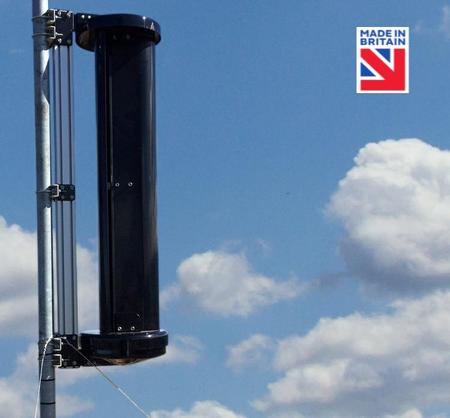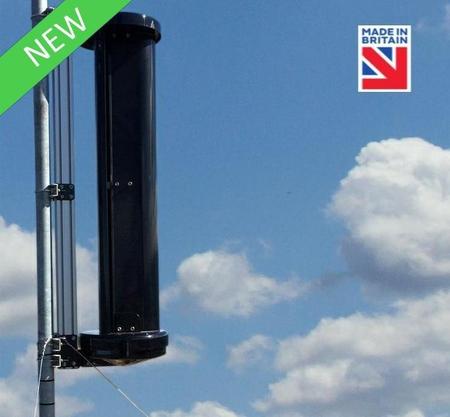Blog
How to Choose the Right Off Grid Solar Inverter System for Your Needs
Choosing the right Off Grid Solar Inverter System is crucial for maximizing the efficiency and effectiveness of your renewable energy setup. With a growing emphasis on sustainability and energy independence, many homeowners and businesses are exploring off-grid solutions to reduce their reliance on traditional power grids. However, the array of options available can be overwhelming. Factors such as power requirements, inverter types, system compatibility, and budget considerations play pivotal roles in making the right choice. Whether you're looking to power a small cabin, a mobile home, or an entire residence, understanding these dynamics is essential. This guide aims to provide insights into the critical aspects of selecting an Off Grid Solar Inverter System tailored to your specific energy needs, ensuring that you make an informed decision in your journey toward sustainable living.
Understanding Your Energy Needs for Off Grid Living
When considering an off-grid solar inverter system, understanding your energy needs is crucial. According to the U.S. Department of Energy, a typical American household consumes about 877 kWh monthly. However, off-grid living often involves a significant reduction in energy consumption, highlighting the importance of a detailed energy assessment. For instance, if you're downsizing to a smaller home or adopting a minimalist lifestyle, your energy usage might drop to as little as 200-400 kWh per month, shaping your inverter selection.
To effectively determine your requirements, start by listing all your essential appliances and their power ratings. The National Renewable Energy Laboratory (NREL) suggests calculating the total wattage and estimating usage hours for each appliance. This will provide a clearer picture of your daily energy requirements. Once you've identified these key factors, you can choose a solar inverter system that not only meets your energy needs but also allows for potential future expansions, ensuring a sustainable and flexible off-grid living experience.
How to Choose the Right Off Grid Solar Inverter System for Your Needs
| Power Requirement (W) | Inverter Type | Suitable Battery Type | Estimated Daily Usage (kWh) | Installation Complexity |
|---|---|---|---|---|
| 1000 | Pure Sine Wave | Lithium-ion | 2.5 | Moderate |
| 2000 | Modified Sine Wave | Lead Acid | 5.0 | High |
| 1500 | Pure Sine Wave | Gel | 3.0 | Moderate |
| 3000 | Modified Sine Wave | Lithium-ion | 7.5 | Very High |
Types of Solar Inverters and Their Suitable Applications
When selecting the right off-grid solar inverter system, it's essential to understand the various types of solar inverters available and their suitable applications. The three main categories are pure sine wave inverters, modified sine wave inverters, and grid-tie inverters. Pure sine wave inverters produce power that is consistent and safe for sensitive electronics, making them ideal for homes with numerous gadgets or high-end appliances. Modified sine wave inverters, on the other hand, can be suitable for simpler devices and are often more cost-effective, but may not work well with all electronics.
Tips: When assessing inverter types, consider your specific power needs. If your appliances are sensitive or require a stable current, lean towards pure sine wave inverters. For basic lighting or simple devices, a modified sine wave inverter might suffice.
Furthermore, grid-tie inverters are designed for systems that can connect to the utility grid for additional power support and functioning during outages. While not suited for strictly off-grid applications, they can offer flexibility if future expansions are considered. It's important to evaluate your energy consumption patterns and choose an inverter that aligns with your lifestyle and energy goals to ensure optimal performance and efficiency.
Key Factors to Consider When Choosing an Inverter
When selecting the right off-grid solar inverter system, there are several key factors to consider that align with your specific needs. One critical aspect is the inverter’s capacity, which should be sufficient to handle your peak energy demand. For instance, if you plan to power larger appliances, a higher wattage inverter will be necessary to ensure that your system runs smoothly without overloading. Furthermore, efficiency ratings are essential as they indicate how well the inverter converts DC power from solar panels into usable AC power. Inverters with a higher efficiency rating can maximize energy harvest and improve your system's overall performance.
Another important factor is the type of inverter technology. Options typically include pure sine wave inverters, which are ideal for sensitive electronics, and modified sine wave inverters, which can be a more economical solution for less sensitive applications. Moreover, considering the inverter's durability and warranty is crucial, especially for off-grid systems subjected to varying weather conditions. With the global off-grid solar inverter market expected to expand alongside rising energy needs, selecting the right inverter tailored to your unique requirements becomes increasingly vital in optimizing your energy independence.
Budgeting for Your Off Grid Solar Inverter System
When considering an off-grid solar inverter system, budgeting is one of the most critical aspects to enhance the efficiency and sustainability of your energy solution. According to a recent report from the Solar Energy Industries Association (SEIA), the average cost of off-grid solar inverter systems can range from $1,000 to $3,000, excluding the solar panels and batteries. Understanding these costs will help you make informed decisions and prevent overspending.
**Tips:** Assess your energy needs before making any decisions. Calculate your daily energy consumption in kilowatt-hours (kWh) to determine the appropriate inverter size. This calculation will also guide you in choosing the right battery storage, which is essential for off-grid setups.
Furthermore, you should consider potential additional costs, such as installation fees, maintenance, and monitoring systems. A study published in the Journal of Sustainable Energy & Environmental Science highlighted that installing a robust off-grid system can increase your energy independence while also yielding long-term savings—often paying off in about 5-10 years under favorable solar conditions. Balancing upfront investment with future savings is key to creating a sustainable energy setup that meets your needs.
**Tips:** Include a contingency in your budget for unexpected costs, typically around 10-20%. This will provide a financial buffer that can help manage any surprises during installation or operation.
Budgeting for Your Off Grid Solar Inverter System
Installation and Maintenance Tips for Optimal Performance
When installing an off-grid solar inverter system, proper placement and secured connections are crucial for optimal performance. The inverter should be located in a shaded area to prevent overheating, and it must be mounted in a way that allows for adequate ventilation. Ensure that all electrical connections are tight and weatherproof to prevent moisture ingress, which can lead to significant issues over time. Additionally, grounding the system is essential to protect against surges and lightning strikes.
Maintenance plays a vital role in sustaining the efficiency of your solar inverter system. Regularly check the inverter's status indicators to monitor its performance and catch any anomalies early. Cleaning the solar panels periodically from dirt and debris improves energy absorption. It's also important to inspect the battery bank for corrosion and ensure that the electrolyte levels are sufficient if dealing with lead-acid batteries. Setting a schedule for professional inspections can help identify potential issues before they become problematic, extending the lifespan of your overall system.
Tell us about your project
Our Off-grid experts will come back with recommendations






